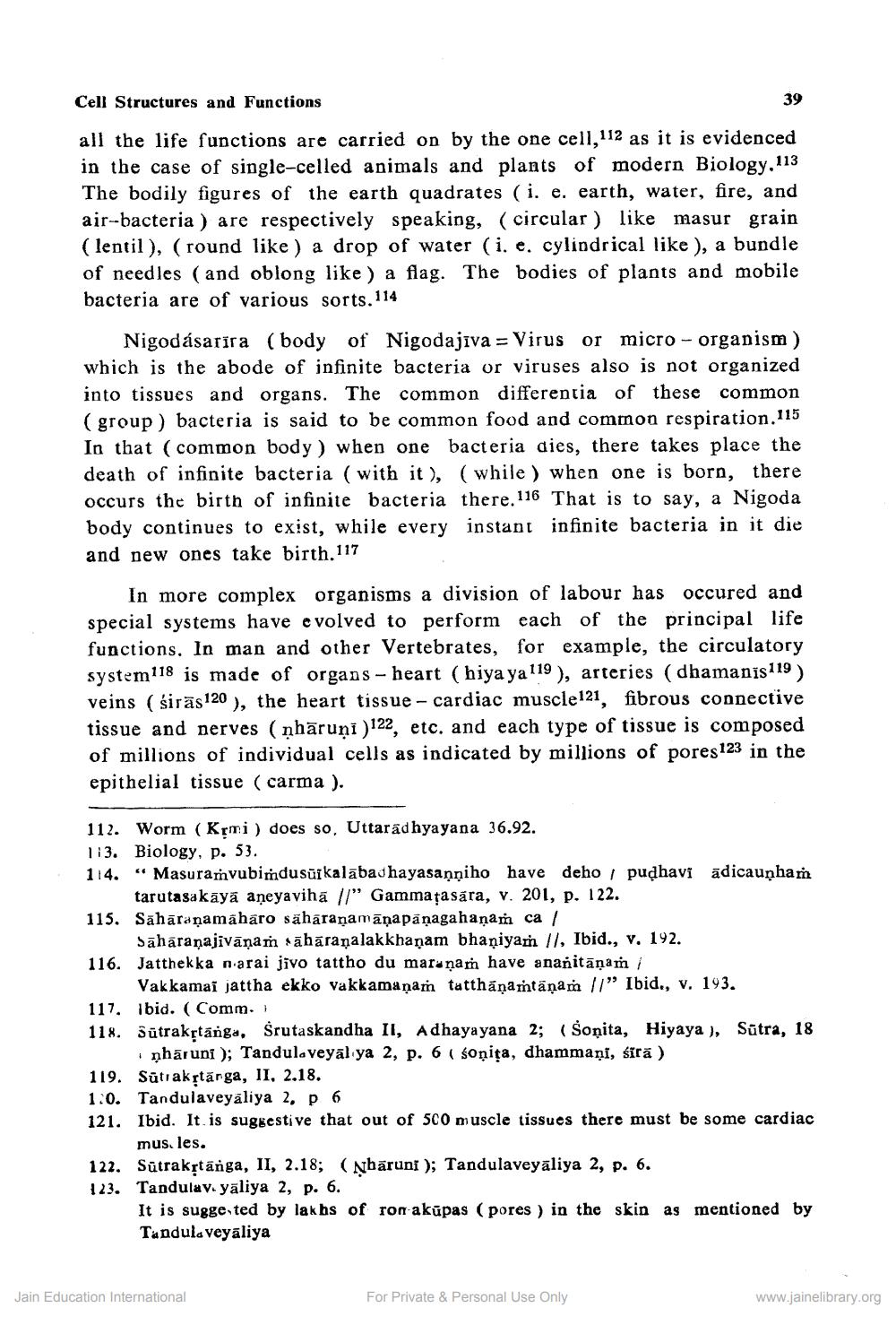________________
Cell Structures and Functions
all the life functions are carried on by the one cell,112 as it is evidenced in the case of single-celled animals and plants of modern Biology, 113 The bodily figures of the earth quadrates (i. e. earth, water, fire, and air-bacteria) are respectively speaking, (circular) like masur grain (lentil), (round like) a drop of water (i. e. cylindrical like), a bundle of needles (and oblong like) a flag. The bodies of plants and mobile bacteria are of various sorts.114
Nigodásarira (body of Nigodajiva = Virus or micro-organism) which is the abode of infinite bacteria or viruses also is not organized into tissues and organs. The common differentia of these common (group) bacteria is said to be common food and common respiration.115 In that (common body) when one bacteria dies, there takes place the death of infinite bacteria (with it), (while) when one is born, there occurs the birth of infinite bacteria there. 116 That is to say, a Nigoda body continues to exist, while every instant infinite bacteria in it die and new ones take birth.117
In more complex organisms a division of labour has occured and special systems have evolved to perform each of the principal life functions. In man and other Vertebrates, for example, the circulatory system118 is made of organs - heart (hiya ya 119), arteries (dhamanis119) veins (śiras 120), the heart tissue- cardiac muscle 121, fibrous connective tissue and nerves (nharuņi)122, etc. and each type of tissue is composed of millions of individual cells as indicated by millions of pores 123 in the epithelial tissue (carma ).
112. Worm (Krmi) does so, Uttaradhyayana 36.92. 13. Biology, p. 53.
1:4.
39
"Masuramvubimdusuikalabadhayasanṇiho have deho pudhavi adicauṛham
tarutasakāyā aṇeyaviha //" Gammaṭasāra, v. 201, p. 122. 115. Sāhāraṇamāhāro sāhāraṇamāṇapāṇagahaṇam ca /
Saharaṇajivānam āhāraṇalakkhanam bhaniyam //, Ibid., v. 192.
116. Jatthekka narai jivo tattho du maranam have ananitāṇam /
Vakkamai jattha ekko vakkamaṇam tatthanamtaṇam //" Ibid., v. 193. 117. ibid. (Comm.
118. Sūtrakṛtānga, Srutaskandha II, Adhayayana 2; (Šonita, Hiyaya), Sutra, 18
phāruni ); Tandulaveyāl ya 2, p. 6 ( sonita, dhammaṇī, śīrā)
4
119. Sūtrakṛtänga, II, 2.18.
1:0. Tandulaveyaliya 2, p 6
121. Ibid. It is suggestive that out of 500 muscle tissues there must be some cardiac mus.les.
122. Sūtrakṛtänga, II, 2.18; (haruni ); Tandulaveyaliya 2, p. 6.
123. Tandulav. yaliya 2, p. 6.
It is suggested by lakhs of ron akupas (pores) in the skin as mentioned by Tandula veyaliya
Jain Education International
For Private & Personal Use Only
www.jainelibrary.org




